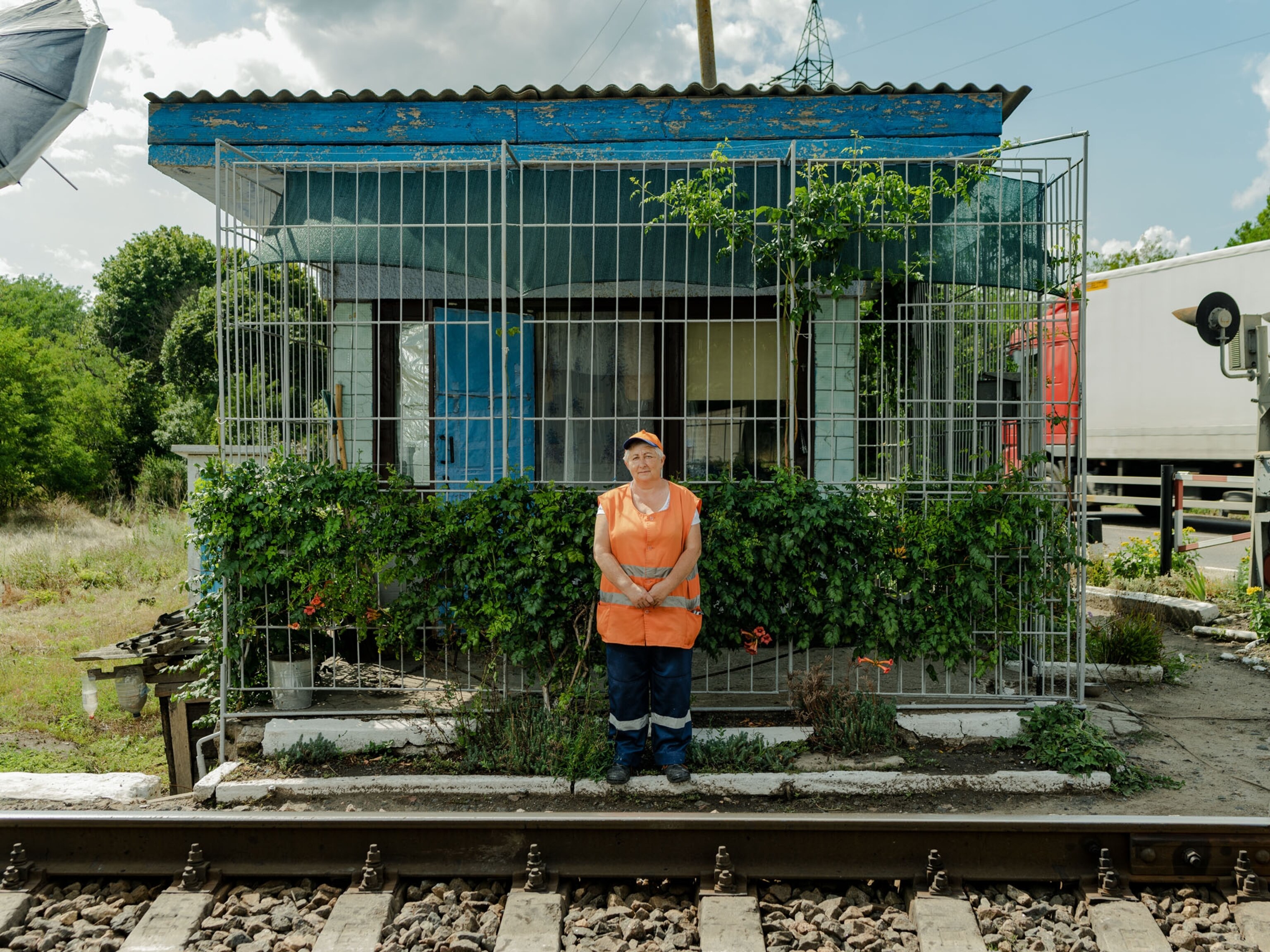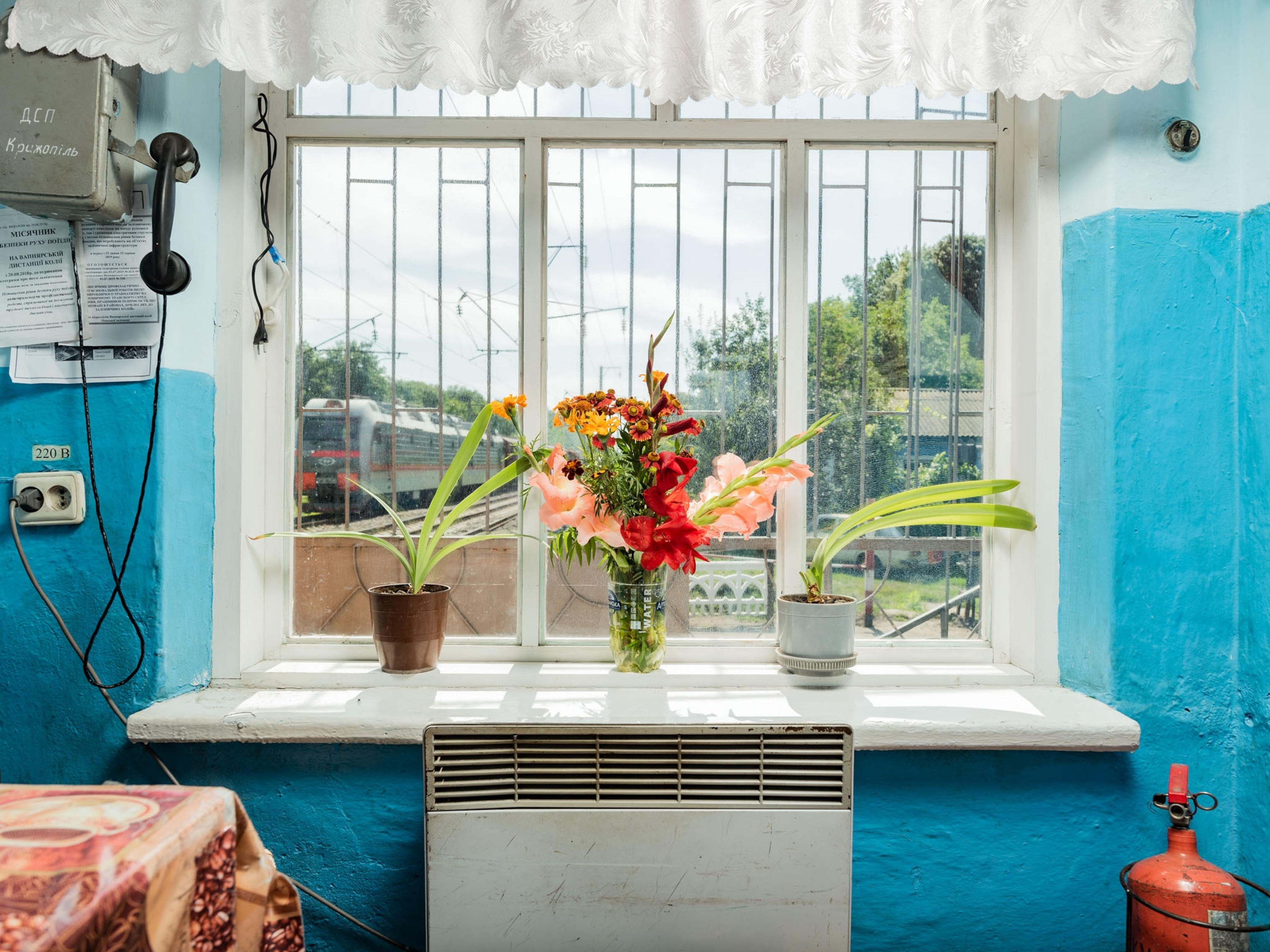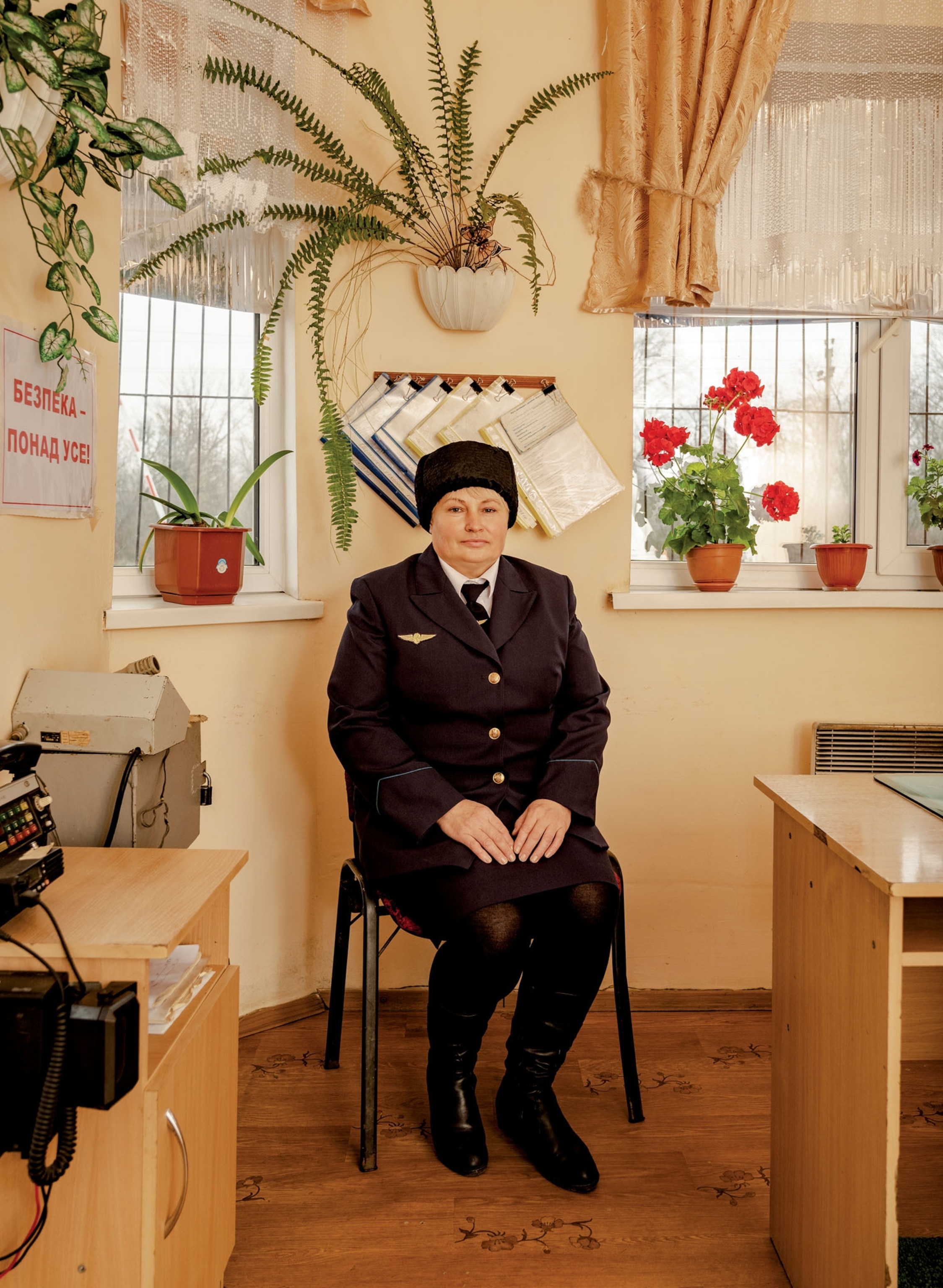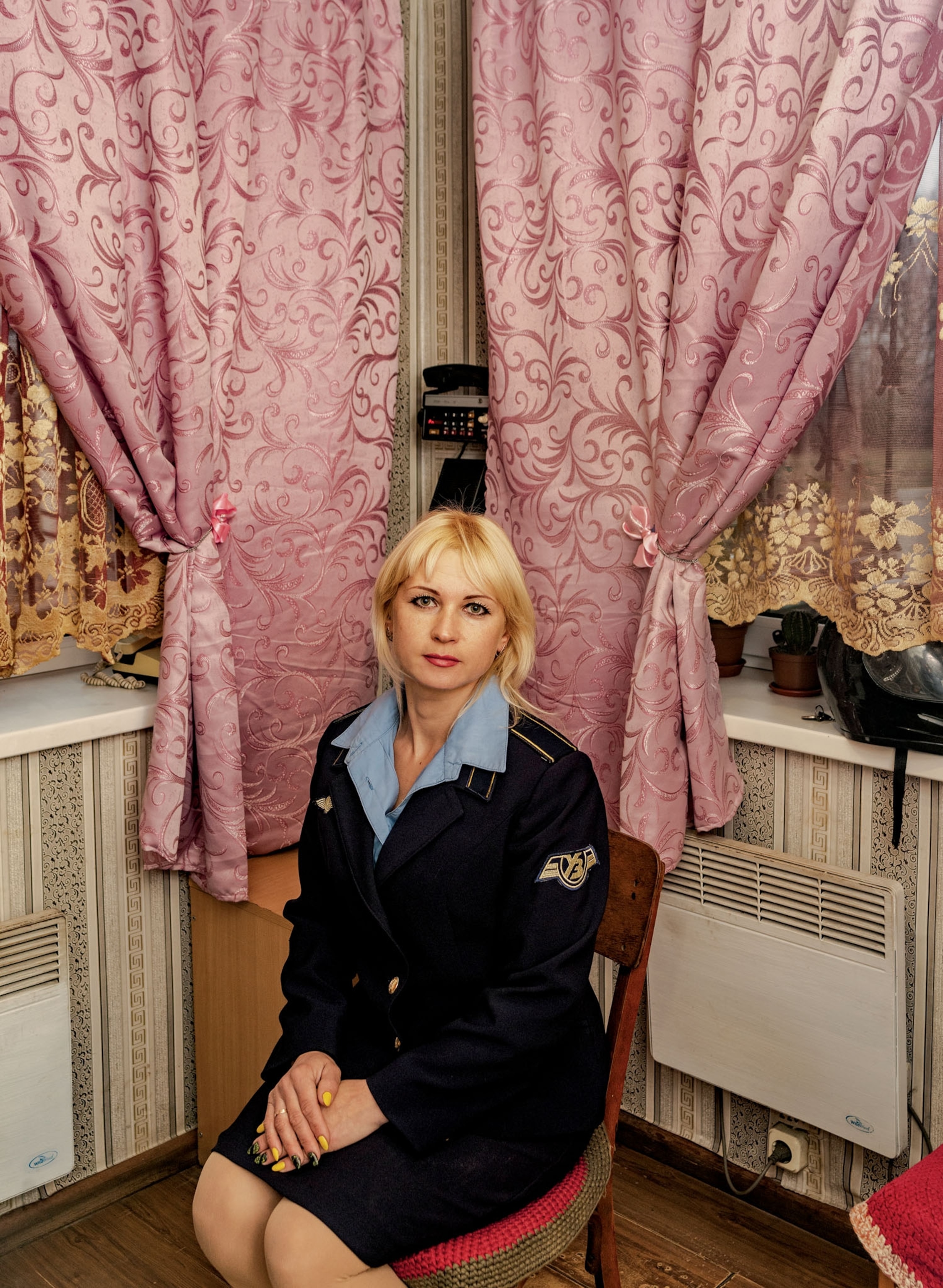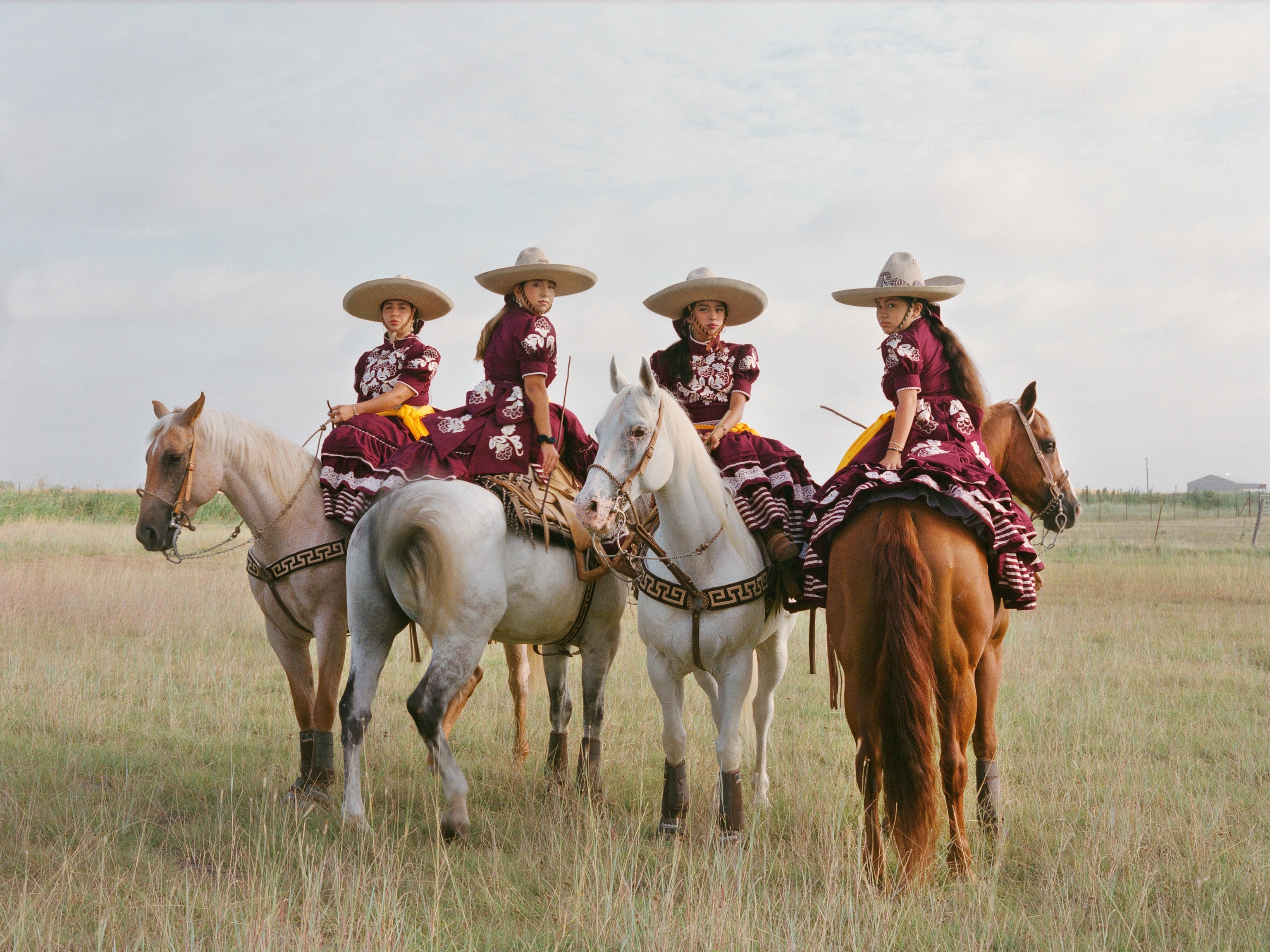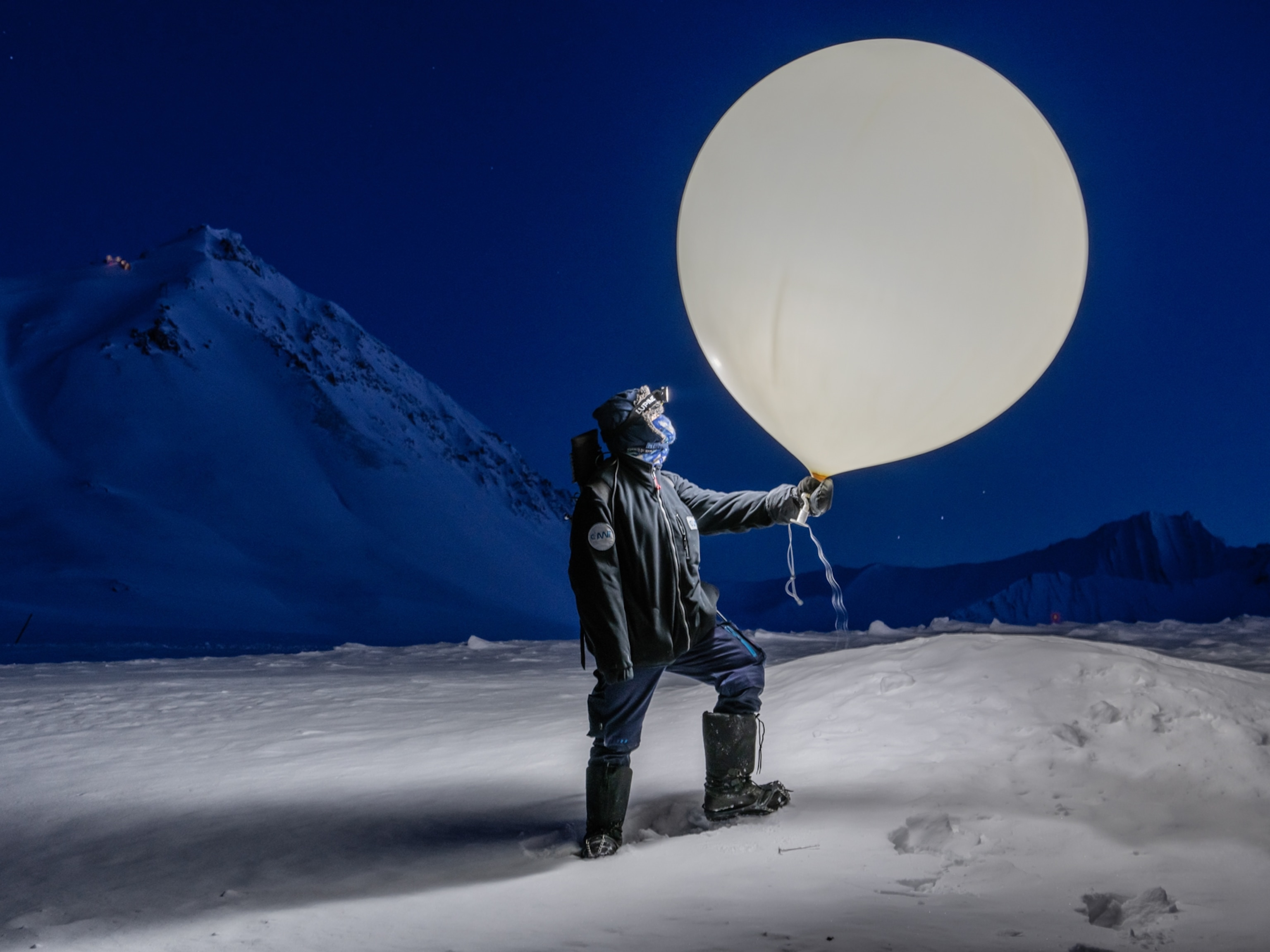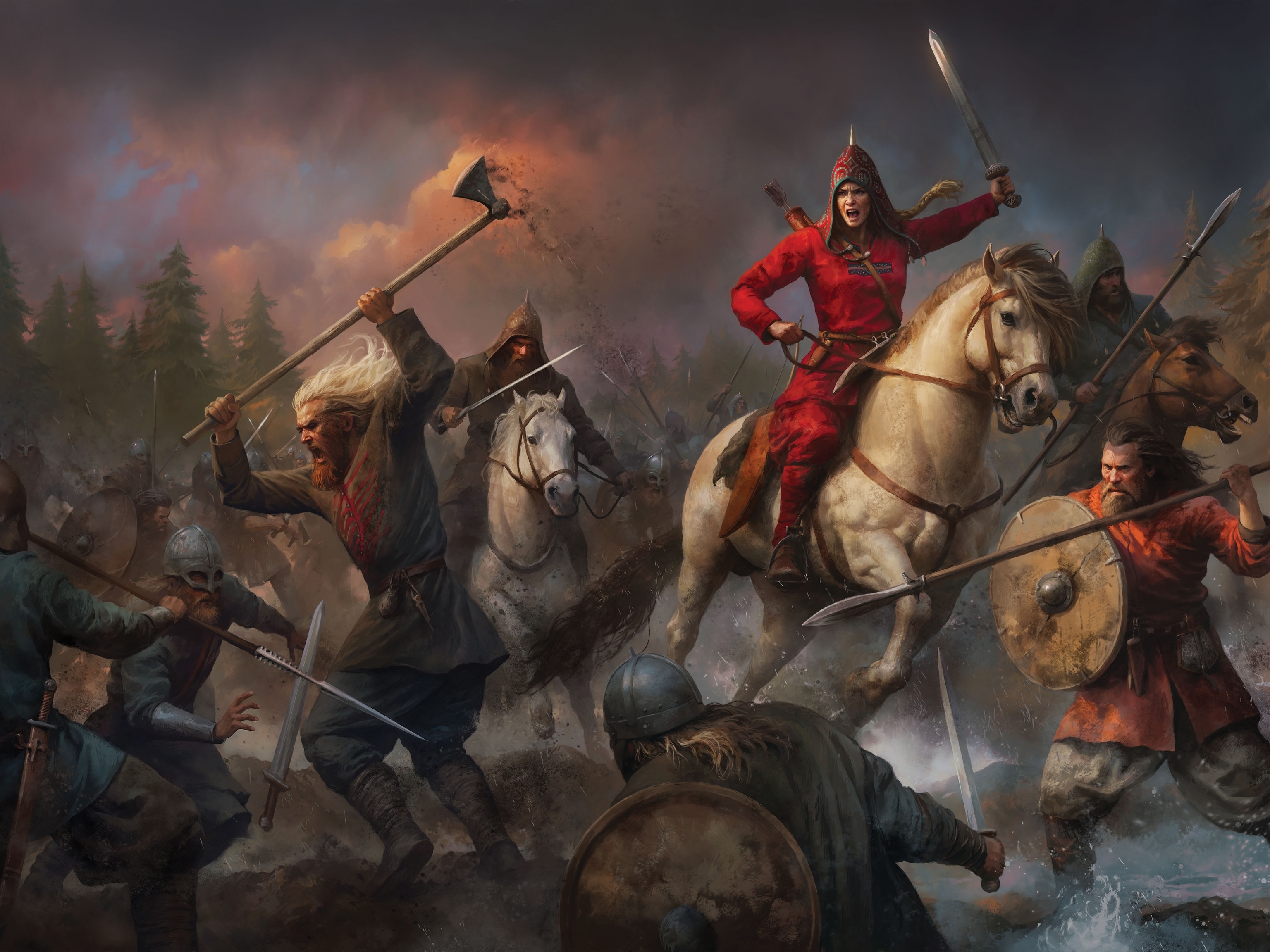Many of Sasha Maslov’s best childhood memories are connected to trains. Every vacation, every trip to another city, he’d stare out the window to see the texture of his country in the apartment buildings and shops and cars waiting for the train to pass. And every so often, he’d see a tiny house with a woman standing by it, holding a yellow flag.
“Ukrainian railroad ladies,” as Maslov calls them in his portrait series, are a cultural tradition that feels as old as rail travel in Ukraine. The workers are tasked with sending flag-based signals to conductors of approaching trains. A folded yellow flag means all clear ahead. An unfolded flag means reduce speed and proceed with caution. A red flag—or a flare shot into the air—means to stop moving entirely, as a hazard is ahead.

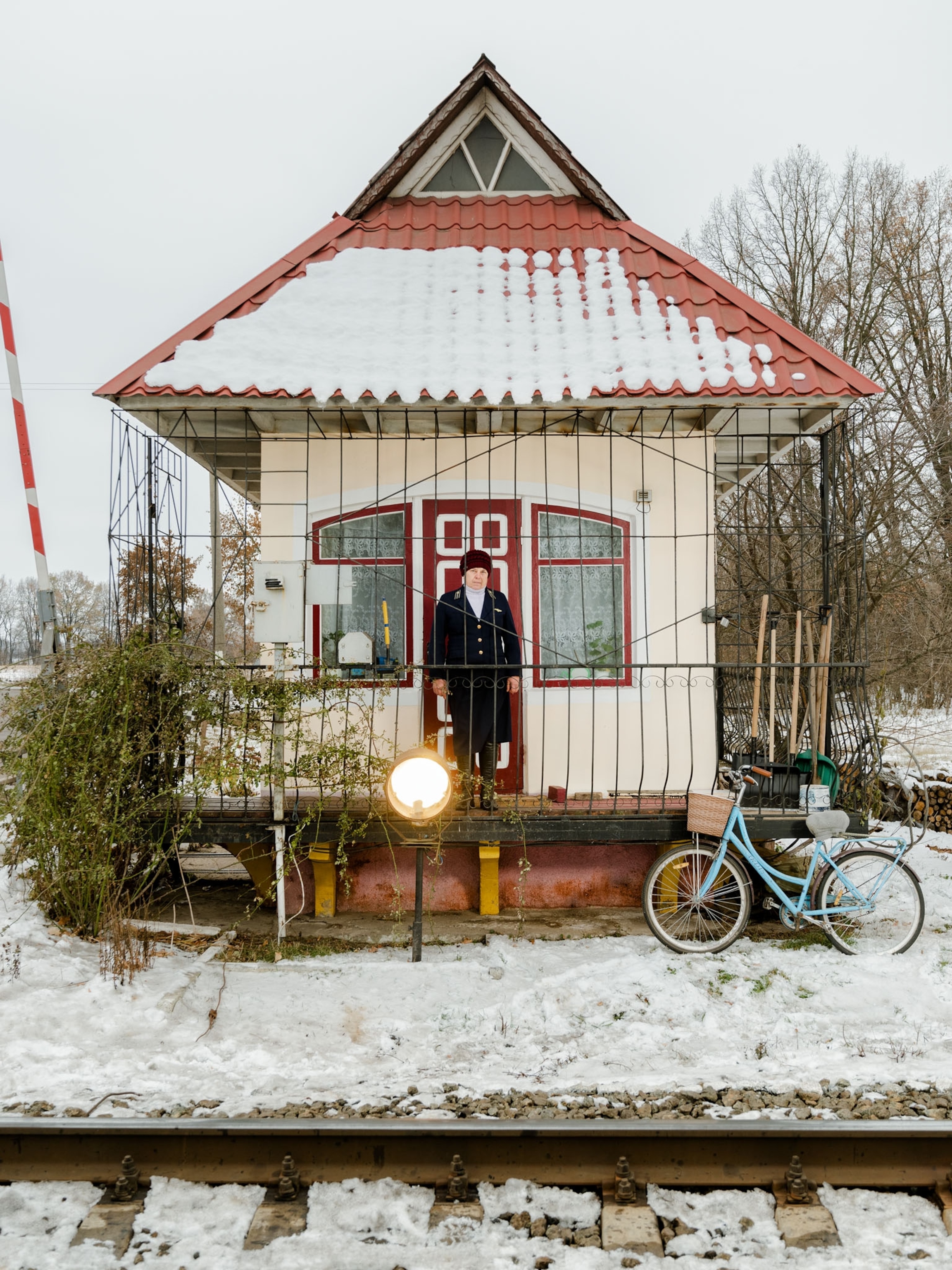
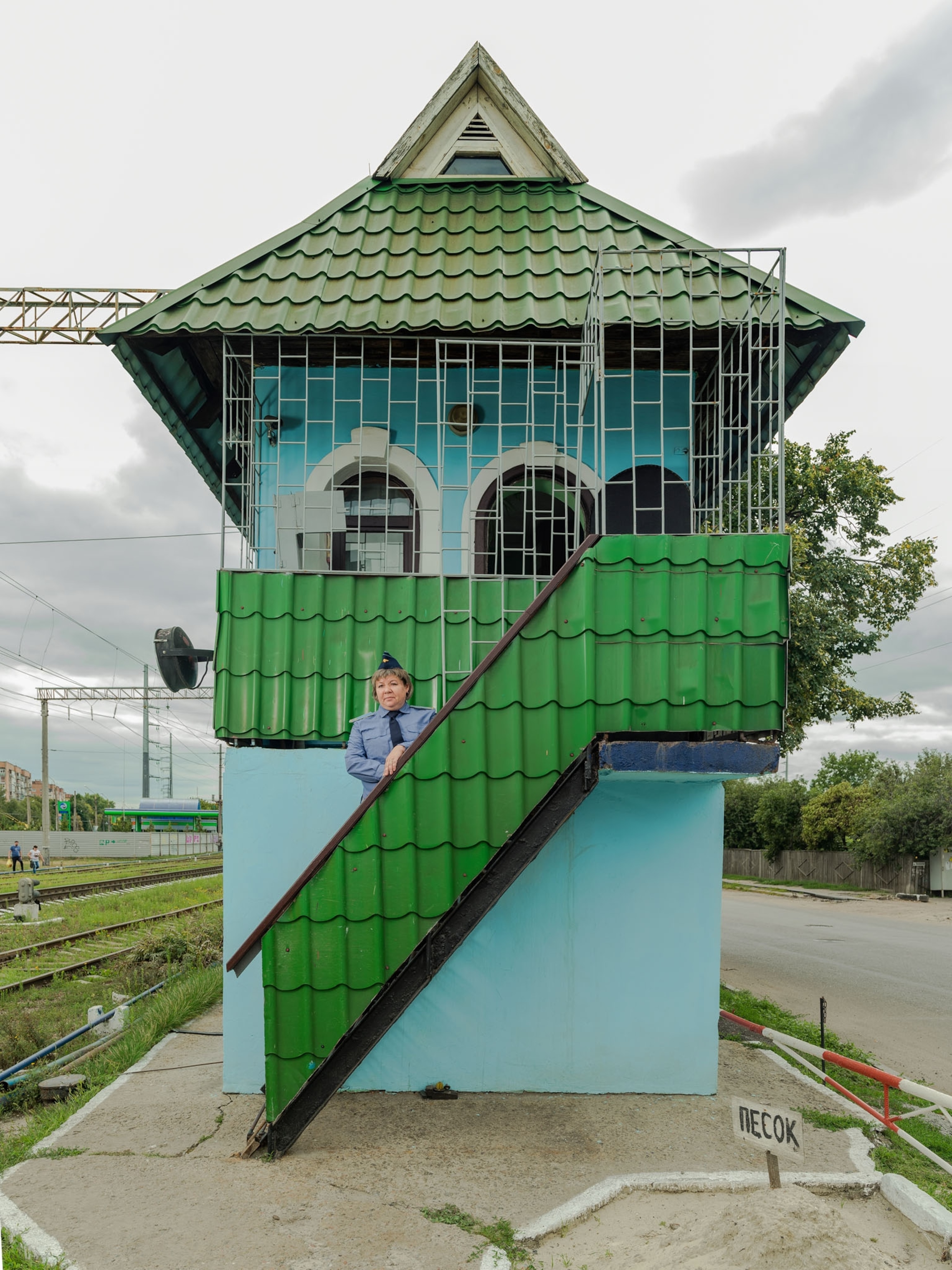
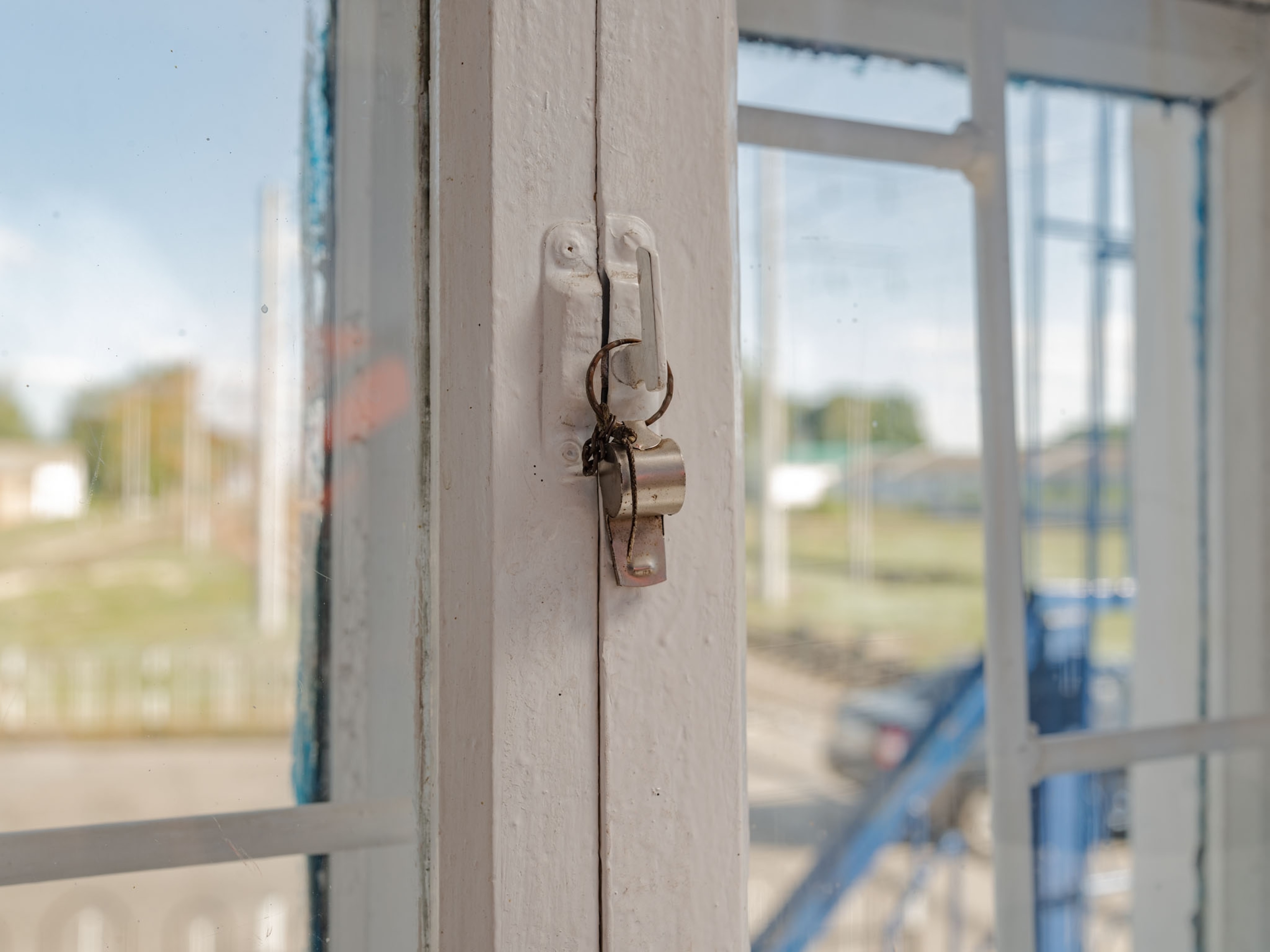
Some aspects of rail officer life are changing. The officers are no longer all women, and the Ukraine Railways agency, Ukrzaliznytsia, has expanded its hiring to try to bring more young workers into the unglamorous but stable work.
In a world of high-speed trains and automated crossings, rail attendants today may spend less time signaling to trains than policing and warning motorists. “Ukrainians are notoriously not law-abiding,” Maslov comments. “If there is no watcher, people will go around the barriers to beat a moving train.”
The life can be monastic. In between trains, the workers tend gardens, complete chores, and fill out paperwork. In one house, Maslov saw a notebook in which an attendant had taken down the license plate numbers of cars that ran through barriers. She sent the list to the police.
